Vegetables to plant in February: 10 crops to sow and grow
Follow our guide to the best vegetables to plant in February, so you are set for success with tomatoes, carrots, chillies, cucumbers and more


The key to knowing which vegetables to plant in February comes down to two things: keeping a close eye on the weather, and planning for the worst! While we grapple with the last weeks of winter, we can encounter cold snaps and mild spells, plus frozen and soggy ground. So while it is tempting to get cracking outdoors, our advice is to start as much as you can under cover, whether that’s a greenhouse or cold frame, a warm propagator or a sunny windowsill.
Chillies, peppers, aubergines and indoor tomatoes are prime candidates for undercover sowing in a warm propagator or greenhouse – benefiting from extra growing times and steady temperatures. It’s impractical to wait until March. Start now and maximize growing spaces for longer. Expensive seeds like cucumbers are best sown indoors as germination is more successful in a protected place. February is also great for sowing slow germinators like parsley and celery.
It may be an unpredictable month – but there are some things you can count on. With the right light, warmth and moisture, so much is possible. From mouth-watering tomatoes to fiery wasabi, there are lots of options from your vegetable planting calendar to get started this month. So make sure you’re ready and start growing now for the year ahead.
Kickstart your spring gardening with the top vegetables to plant in February
If you need inspiration for vegetables to plant in February, you’re in luck! From baby carrots and fun tomatillo to exotic Japanese horseradish and architectural globe artichokes, our guide can help you raise your game.
1. Mini cucumbers
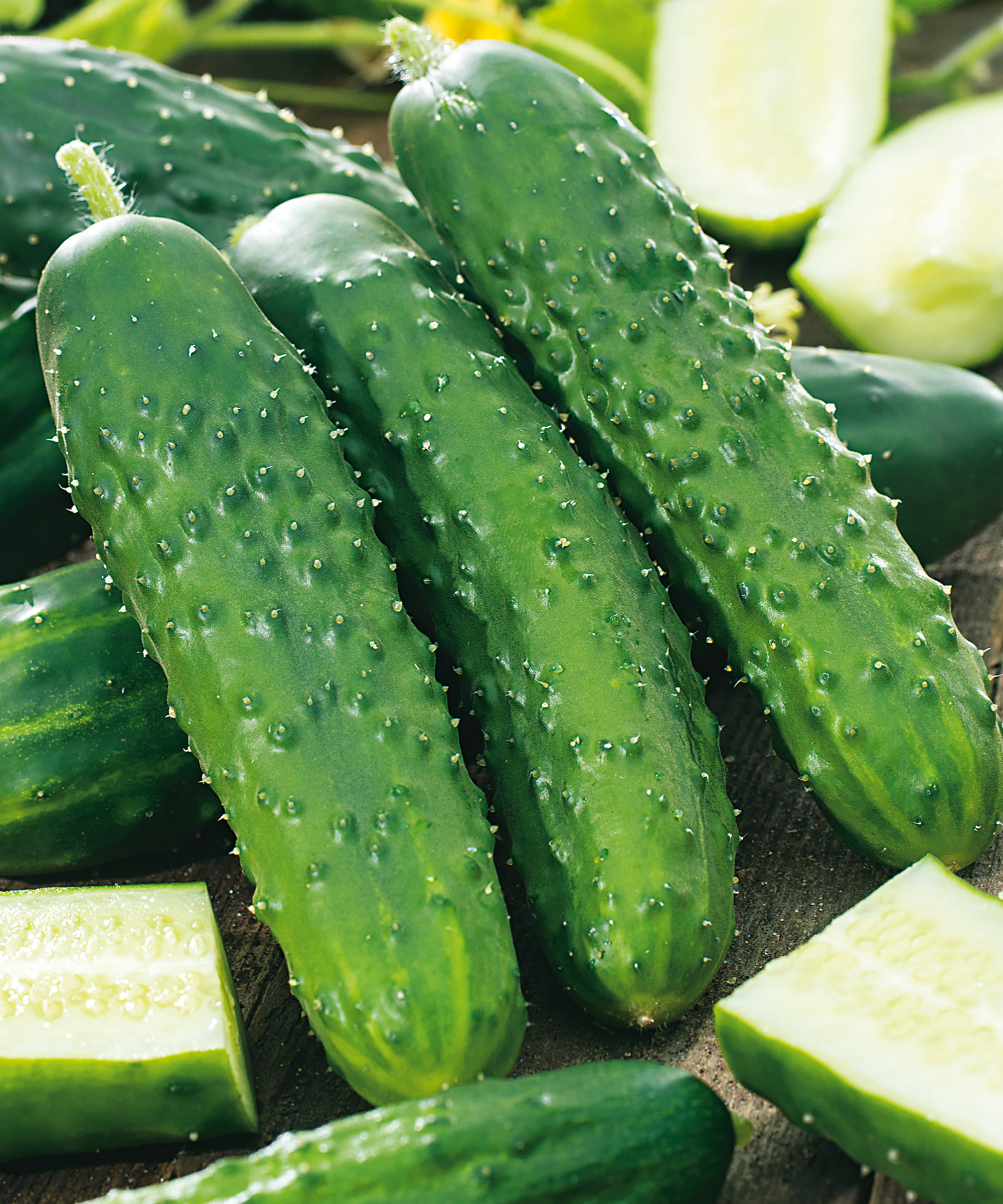
Cucumber ‘Bush Champion’ from Suttons is compact and prolific so it’s ideal for containers, raised beds and small spaces
Small is beautiful, as we kick off our vegetables to plant in February with these miniature marvels. Avid cucumber enthusiasts will want to stagger sowings of different varieties in multiple stages, but for those of you keen to harvest first fruits by Easter, now’s the time to start.
The advantages of growing mini all-female cucumbers now are undeniable, says Amateur Gardening’s organic gardening expert Bob Flowerdew. They are ideal for anyone mulling ideas for what to plant in a greenhouse – plus, they are fast to flourish, prolific, fuss-free and crop for months.
They are also perfect for small spaces, so if you don’t have a greenhouse, then a propagator or sunny windowsill is fine. Anyone who knows how to grow cucumbers will tell you these are relatively expensive seeds, so it pays to boost your chances of germination with indoor sowings you can plant on in a greenhouse border, growbag or large pot. Make sure your pint-sized plants are big on luscious flavors with regular irrigation: keep compost moist and ventilate well. The warmer, the better, says Bob.
Top recommendations for mouthwatering mini cucumbers with superior flavor and shelf life are legion. Try smooth-skinned ‘Mini Munch’, container-friendly ‘Bush Champion’, sweet ‘Baby F1’ and ‘Beth Alpha’, vigorous ‘Socrates’, disease-resistant ‘Passandra’ and rotund yellow ‘Crystal Apple’. What are you waiting for? It’s crunch time!
2. Red spring onions
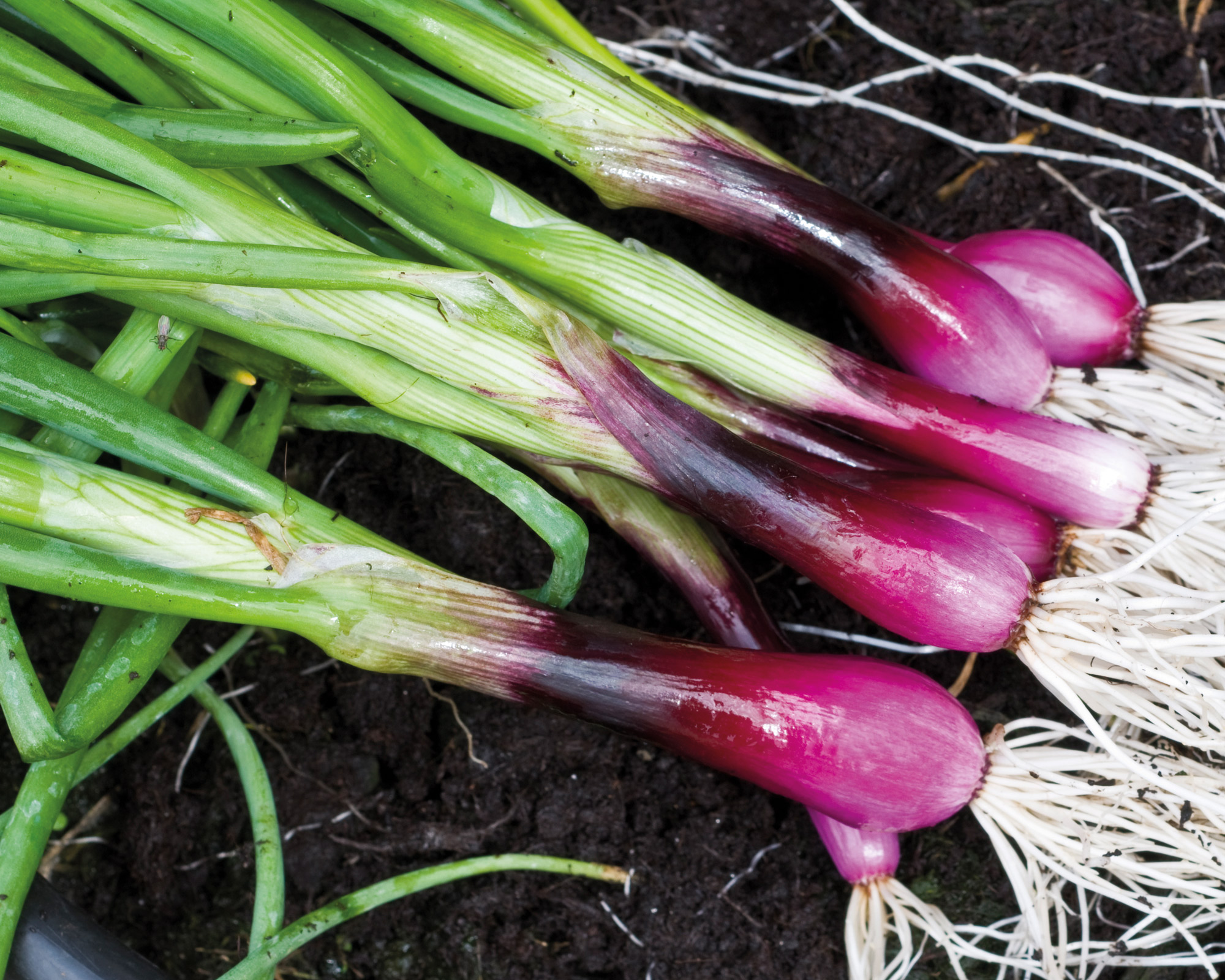
Dynamic purply red ‘Apache’ from Suttons has a mild taste and can be pulled young or left to bulb up
Speaking of crunch time, if you’re looking for easy vegetables to plant in February you’re advised to make room for spring onions in your kitchen garden ideas. Grown early and often, these salad stalwarts accumulate at a hearty pace.
Anyone keen on knowing how to grow onions will love the fact that these natural immune boosters can be harvested even quicker than standard bulb varieties. They have more names than a secret agent – salad onions, bunching onions, scallions, green onions… But while you may be familiar with green and white springs, it’s well worth livening up your salads and stir-fries with these colorful alternatives.
For vibrant pungent pickings in zingy red-skinned bundles, try the deep purple-red ‘Apache’, intense Italian ‘Lilia’, the half-and-half ‘Red And White Mix’ and rich all-rounder ‘North Holland Blood Red’.
Sow seeds liberally into trays for planting out in late March. Take care not to overwater, and if you move plantings outside make sure they don’t have to compete with weeds. Scallions are some of the best vegetables to grow in raised beds but also thrive in containers with good drainage holes, and should be ready to harvest in eight-10 weeks.
These pungent beauties are some of the top companion plants for kale and they are also great partners for anyone growing radishes as well as peppers, tomatoes, beetroot, radishes and carrots. Sowing regularly will guarantee a medley of brightly hued alliums into summer and beyond.
3. Chilli peppers
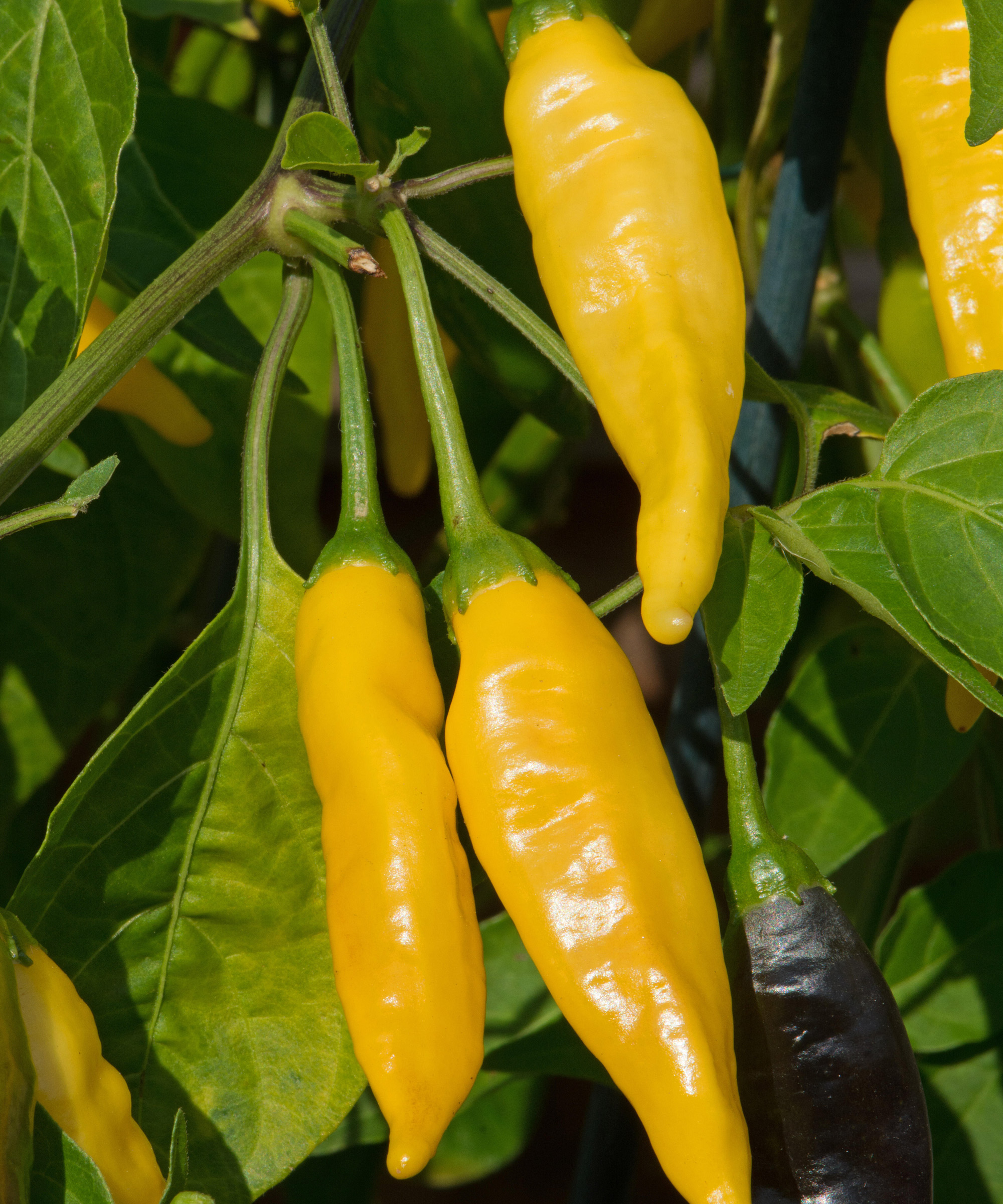
Not so mellow yellow: ‘Peruvian Lemon Drop’ is a hot citrusy cone pepper that thrives in a greenhouse or patio pot
Did you know that pound for pound, red chillies (Capsicum chinense) contain over twice as much vitamin C as oranges? If you checked out our guide to the essential vegetables to plant in January, you also know early starts have a direct bearing on whether a chilli tickles your taste buds or blows your mind. There’s still a sizzling array of options for anyone after the best (and hottest) vegetables to plant in February, from jalapenos and cherry bombs to trail-blazing scorpions and reapers.
The trick with knowing how to grow chillies is to give them plenty of time to reach those atomic heat levels. Germination rate under cover is most likely at 73˚F-80˚F (23-27˚C) and it’s worth investing in a heating mat. Keep young plants on the south window of the greenhouse and make sure they get at least six hours of sunlight per day at 64˚F (18˚C). Chris Bonnett of Gardening Express also recommends well-drained compost and watering once a week. Wait until May to transfer outside, although hotter varieties will benefit from being kept under cover.
Heat-seekers can mix and match the gentle aromatic buzz of ‘Trinidad Perfume’ and ‘Biquinho Yellow’ with sinus-clearing ‘Peruvian Lemon Drop’ and ‘Hot Thai’, culminating in eye-watering ‘Prairie Fire’ and stratospheric ‘Carolina Reaper’. If you’re keen to try growing vegetables in pots, these feisty fruity firecrackers will reward your patience with months of killer crops from July to October.
4. Wasabi
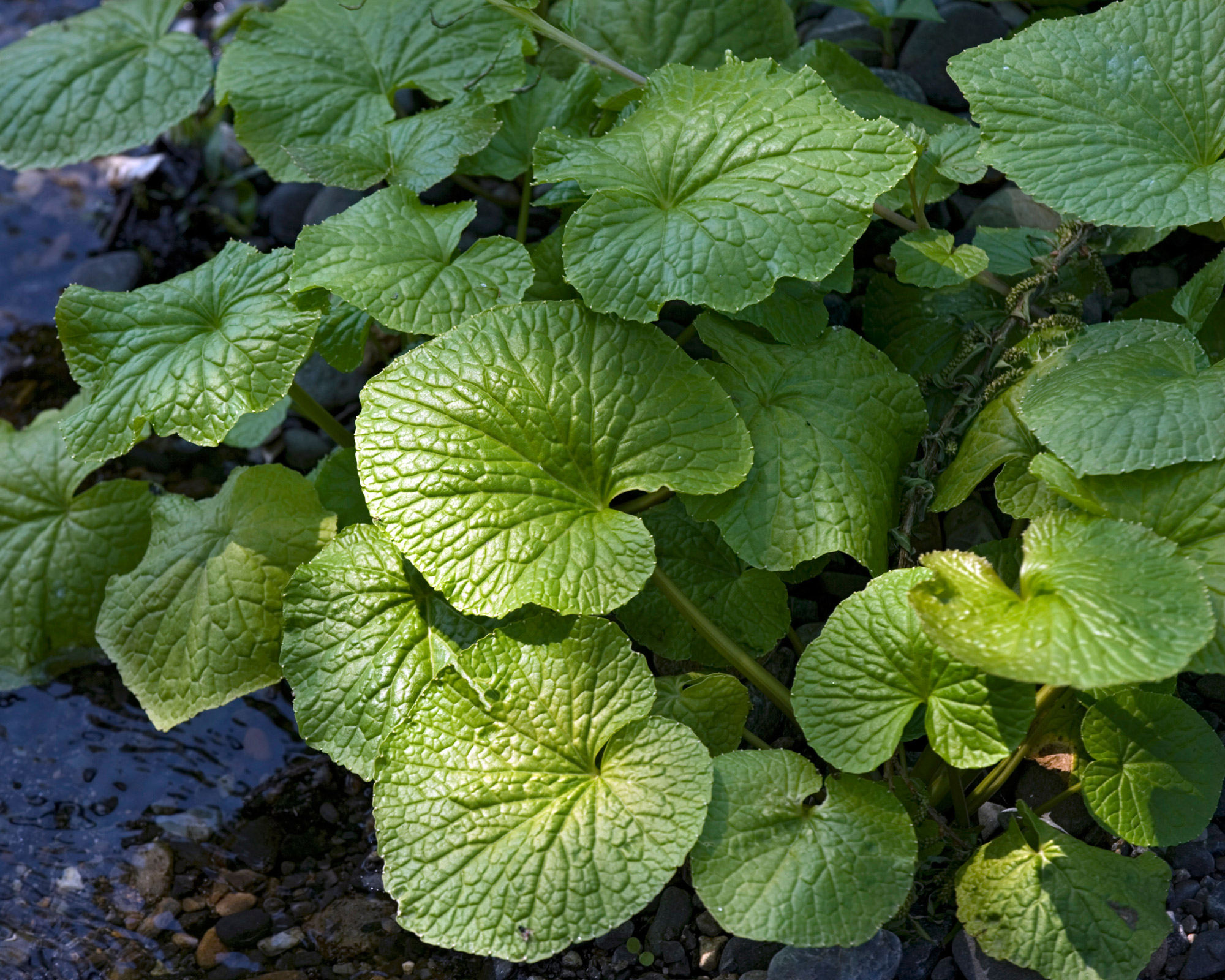
In the wild, wasabi thrives near river beds and streams, so it is perfectly at home in a cool, shady spot near a water feature
If the last entry isn’t enough to satisfy your appetite for heat, why not give this easy-going tongue-tingler a try? Wasabi (Japanese horseradish) scores a place in our list of vegetables to plant in February despite the fact that it has a reputation for being a bit fussy. Don’t believe the hype: this pungent plant is fun to grow and can add interest to any garden pond ideas and water features. In the wild, this sushi and stir-fry staple flourishes near river beds and mountain streams, but for home-growing the only requirements are to be kept well watered and in full shade.
Hot favorite varieties of this striking perennial include thick-leaved ‘Daruma’, fast-growing ‘Fuji Daruma’, rot-resistant ‘Sanpoo’, spreading ‘Mazuma’ and bright green ‘Midori’. Pot dormant rhizomes (thick stalks) up into multi-purpose, place somewhere shady under cover, and keep cool, moist and temperate. As with many of the best shade loving plants, make sure conditions are damp rather than waterlogged once you plant out your wasabi – and ensure it is kept weed-free.
Check your soil is pH 6-7 for the happiest growing conditions; our guide to soil types can help. Alternatively, keep in large containers. Patience is needed, as it takes two years for the first hot rhizome harvest – but this belter is worth it, and you can enjoy the leafy bounty while you wait.
5. Greenhouse tomatoes
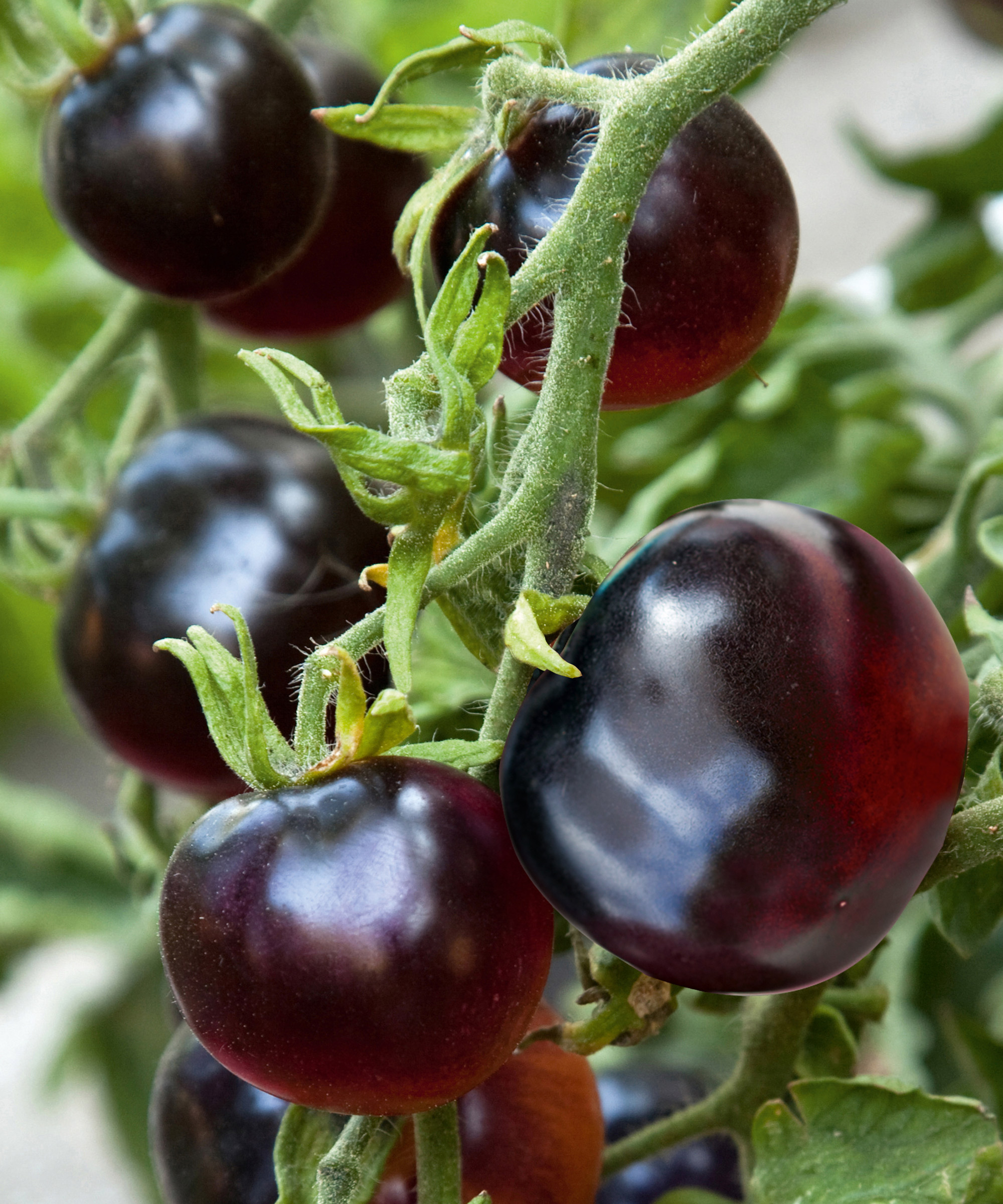
Loaded with vitamins and antioxidants, ‘Indigo Rose’ from Suttons is the tomato of choice for superfood lovers
There are more tomato varieties than days in the year, so why wouldn’t you sow a few kinds undercover right now? Whether your tastes run to the traditional, tiny, visually arresting or enormous, tomatoes are the ultimate vegetables to plant in February. Even if you know how to grow tomatoes, you’ll be amazed at the possibilities you can start now. All you need is a heated greenhouse or the best mini greenhouse you can find to cultivate all manner of beefsteaks, cherries and salad toms.
How about the tempting trusses of ‘Sweet Aperitif’, bright yellow ‘Honey Delight’ or cascading ‘Cherry Falls’? Striped ‘Red Zebra’, or ‘Artisan Bumble Bee Mix’ with its purple, green, pink and yellow hues? Midnight blue superfoodie-favorite ‘Indigo Rose’? Or ginormous ‘Super Sauce’?
Sow in moist seed compost, place in a warm spot with multi-directional light, and tomatoes soon germinate. When they have two true sets of leaves, prick out and move somewhere cooler. As the first flower truss appears, plant in earth, large tubs or growbags, or baskets for stunning displays.
Herb lovers who know how to grow basil will find these two crops make perfect partners. Tagetes, nasturtiums and marigolds also bring out the best in tomatoes. The fruits of your labors will be plentiful under glass, and as Bob Flowerdew points out, nipping out basal side-shoots concentrates growth and gives you even more tomato plants to pot up and enjoy.
6. Early carrots
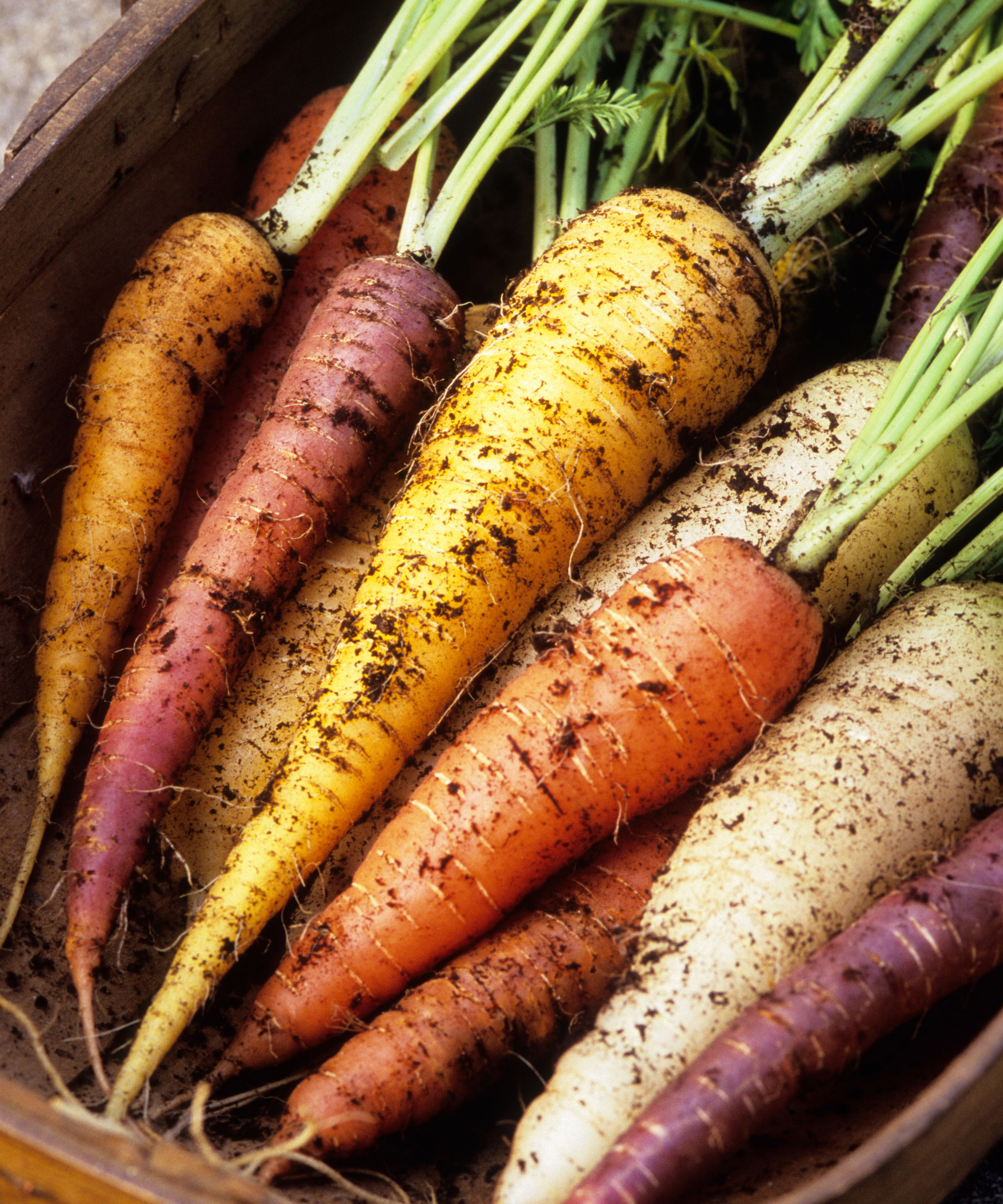
Carrot 'Harlequin' is an adventurous blend of orange, white, purple and yellow Nantes-style roots
If you’re keen to squeeze as much cropping potential out of every week possible, carrots (Daucus carota) are a must choice for vegetables to plant in February. You can make successive sowings from now until high summer – and success is assured if you start February sowings in the soil beds of a greenhouse or polytunnel. Alongside the satisfaction of pulling early roots ahead of the pack, there’s another benefit to indoor sowing. You get the joy of finding out how to grow carrots that aren’t at risk of carrot root fly (which can only attack outdoor crops).
Deep, sandy, well-drained soil and regular watering are key for your carrots. As an alternative to the greenhouse bed, Amateur Gardening’s fruit and veg expert Lucy Chamberlain also suggests sowing in deep containers with holes in the base, placed under glass in gentle heat. ‘Fill a 10in-deep pot or polythene-lined crate with potting compost. Water, allow to drain, and sow on top,’ she says. Place in a well-lit spot at 50˚F (10˚C) and water at frequent intervals for baby roots from April-May.
If you know how to grow leeks, carrots make perfect planting partners. They are also some of the best companion plants for onions, and work well with tomatoes, chives, parsley and calendula. Choose early varieties like ‘Amsterdam Forcing’, ‘Early Nantes’, ‘Harlequin’, ‘Adelaide’ and ‘Romance’. And take it from us, these carrots will be the sweetest ever.
7. Lemongrass
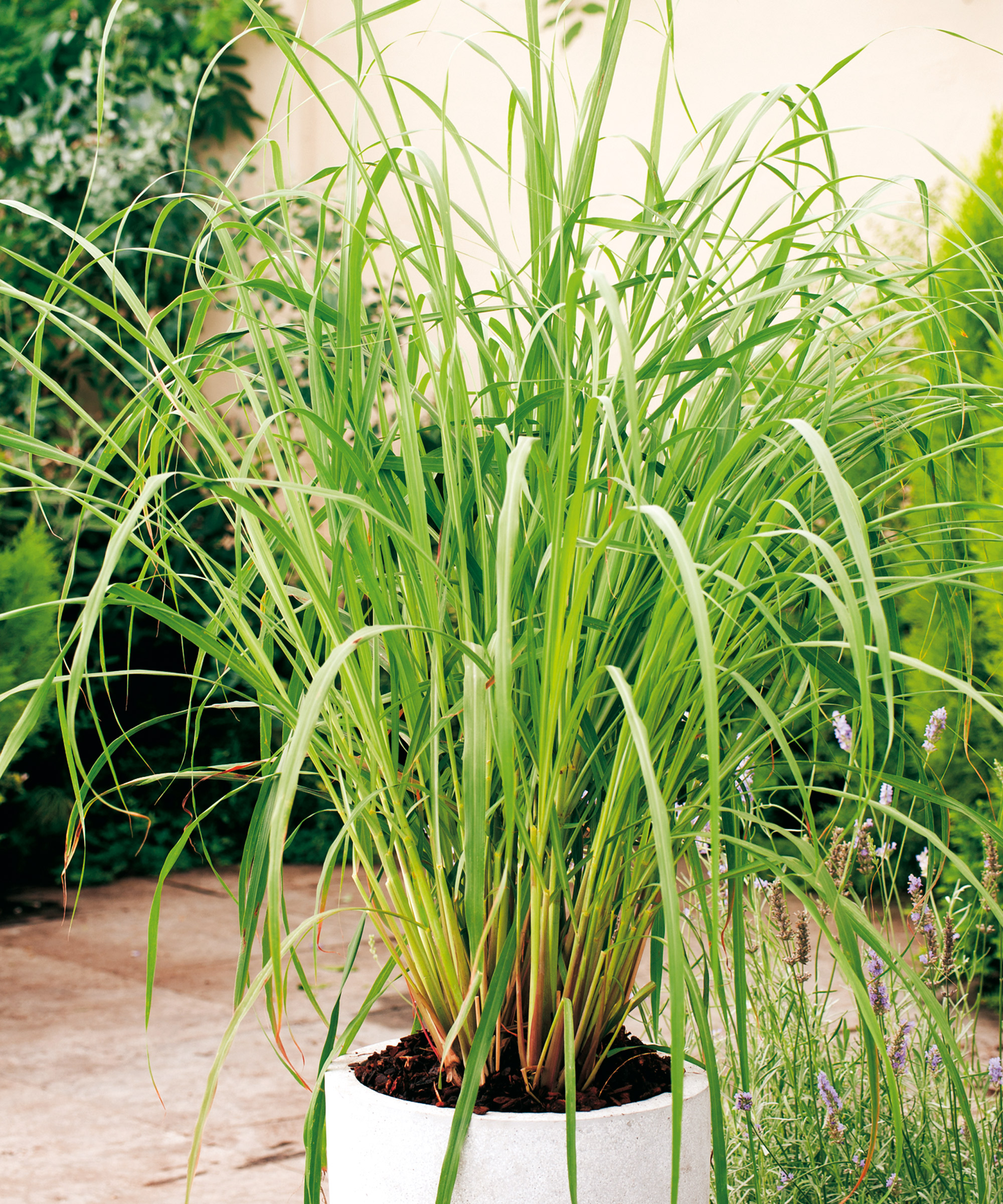
Growing lemongrass in a large container means it can be moved indoors after spending summer out in a sunny spot, as with this standard potted mix from Suttons
Zingy darling of Thai curries, sauces and herbal teas, the Asian splendor of lemongrass makes it a versatile and invigorating entry as one of our best vegetables to plant in February. Thanks to its delectable edible stems, fragrant lemongrass (Cymbopogon citratus) is an ideal choice if you’re looking for plants that repel insects and a striking focal point if you wish to create a herb garden, and now is a great time to start some.
Propagation could not be easier, says Lucy Chamberlain. Start it off from seed in a heated propagator, or grow some from root cuttings in a bright frost-free spot. The latter is as simple as dropping some fresh stems in water and roots should appear within weeks. They can then be potted up for growing on, eventually being moved into large containers or planted out in summer. Leave time for them to establish into distinctive verdant arches of foliage before harvesting individual stems for cooking.
Due to its tropical origins, lemongrass thrives in a sunny, sheltered position and moist, nutrient-rich free-draining soil. It should be moved somewhere frost-free between October and April. Herb lovers who know how to grow thyme and wildflower enthusiasts who know how to grow echinacea will find lemongrass a satisfying companion plant. Tomatoes, peppers and tomatillos (below) also benefit from nearby plantings.
8. Aubergine / eggplant
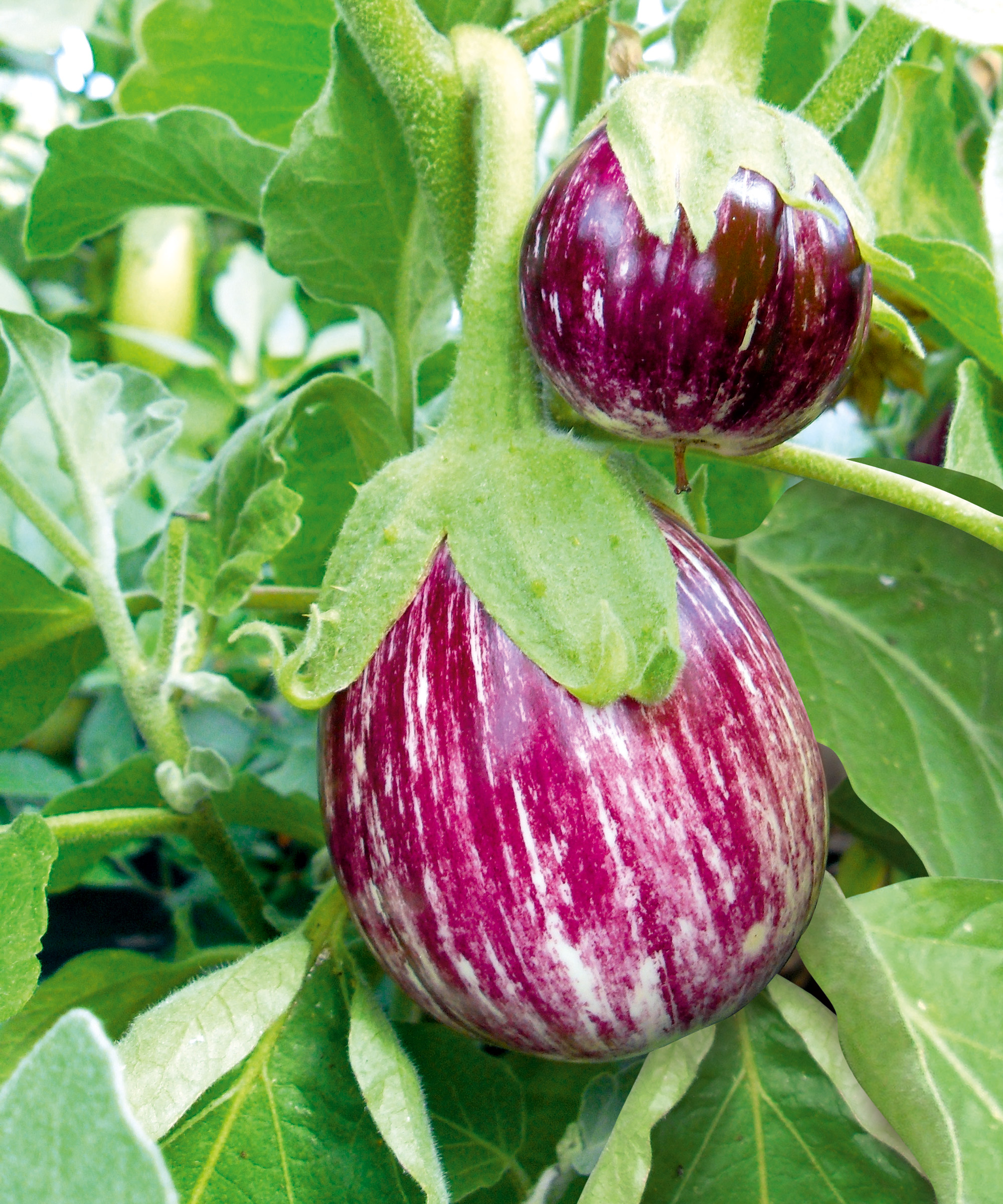
‘Pinstripe’ is a compact dwarf eggplant from Suttons with striking purple and cream striped fruits
Mention the words ‘eggplant’ or ‘aubergine’, and you’ll probably picture a large, glossy black fruit. But if you pick this Far-Eastern favorite as one of your vegetables to plant in February, you’ll soon realize how much variety you can squeeze out of these unassuming superfoods. Alongside the undeniably sleek and splendid ‘Black Beauty’, you can try creamy duo-tone ‘Pinstripe’, magenta-sheened ‘Galine’, ribbed white ‘Clara’ and sweet jade ‘Green Knight’, to name but a few.
Aubergines (Solanum melongena) are semi-tropical plants and so thrive if grown under glass. As Chris Bonnett observes, ‘Aubergines need a lot of warmth so grow them in a heated greenhouse or a spot that gets plenty of sun’. They also work well in conjunction with bold container gardening ideas if the plants are well supported with bamboo canes as they develop. The only catch is that they take their sweet time bulking up, which is why it’s important to start them off now.
When your plants start to flower it’s also wise to give them a high-potash feed every two weeks, as well as a moist, nutrient-rich compost. Generously packaged and loaded with nutrients, eggplants make some of the top companion plants for peppers, and also flourish alongside spinach, tomatoes, calabrese and potatoes.
9. Globe artichoke
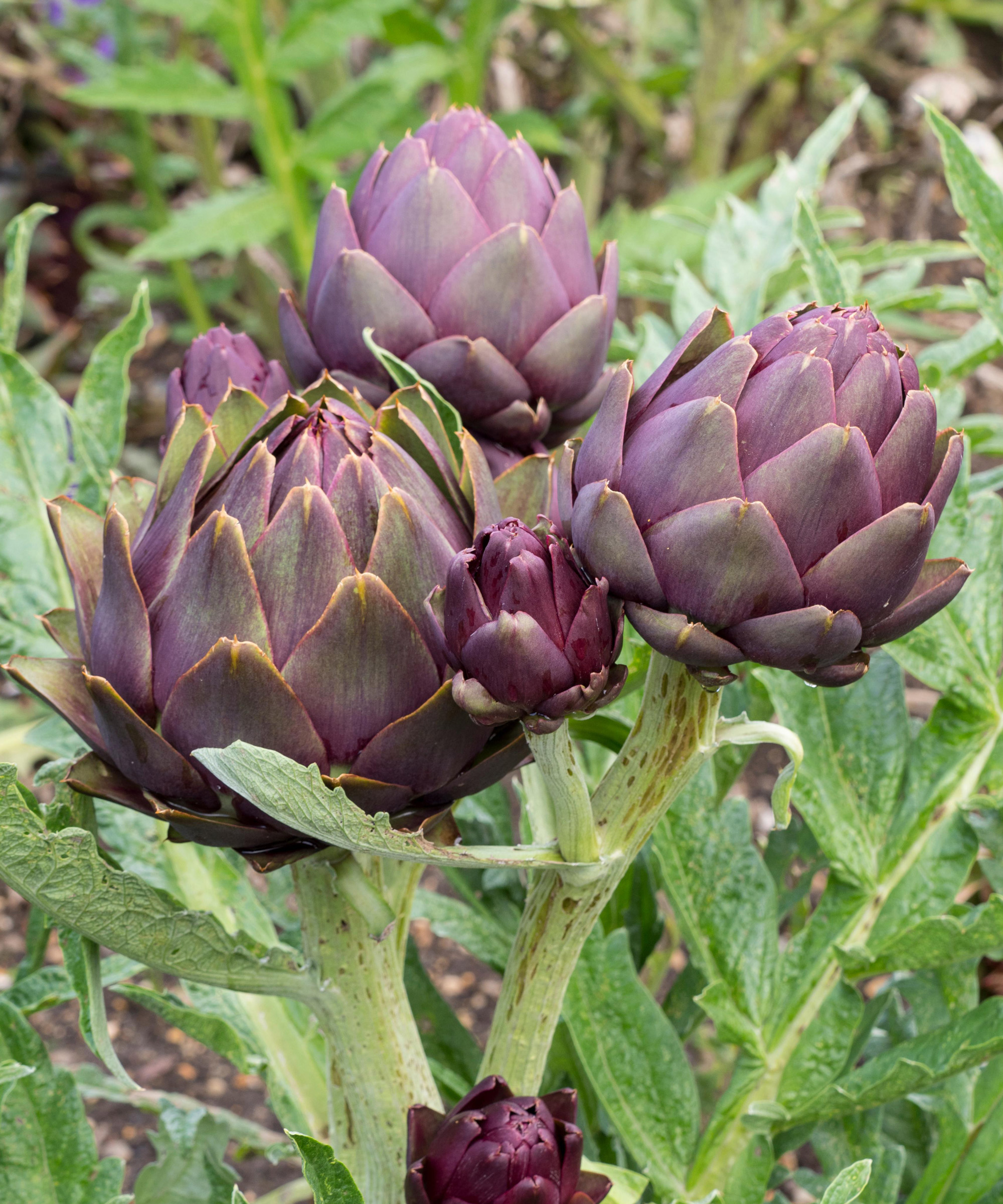
Stunning French heirloom ‘Violet de Provence’ is a highly ornamental as well as edible globe artichoke
Few edible plants generate as much ornamental interest as the gargantuan globe artichoke. It adds architectural heft and majesty to your low maintenance garden border ideas as well as lawn edgings, potagers and borders. With their abundant flower buds and silvery leaves, globe artichokes (Cynara scolymus) will certainly help you to raise your gardening game. Thriving in fertile, well-drained soil and open, sunny situations, they are also remarkably low maintenance and drought-tolerant once established.
Sowing now gives these skyscraping perennials ample chance to develop healthy root systems and, ultimately, those sumptuous heads. They are best started in pots under cover, sowing one seed per 3in diameter pot of multi-purpose. Keep the compost on the dry side of moist. Harden off in May, plant out with plenty of organic matter and don’t skimp on further mulching to conserve goodness in the soil.
If you love tall plants and know how to grow sunflowers, globes make perfect companion plants. These towering edibles are also great planting pals for peas and cucumbers, and ideal if you have recently learned how to grow asparagus, too. Harvest the heads while the scales are soft and tight. Gorgeously tasty varieties to try include early cropping ‘Violet de Provence’, sweet ‘Green Globe’, robust heirloom ‘Gros Vert de Laon’ and tender ‘Purple Italian’.
10. Tomatillo
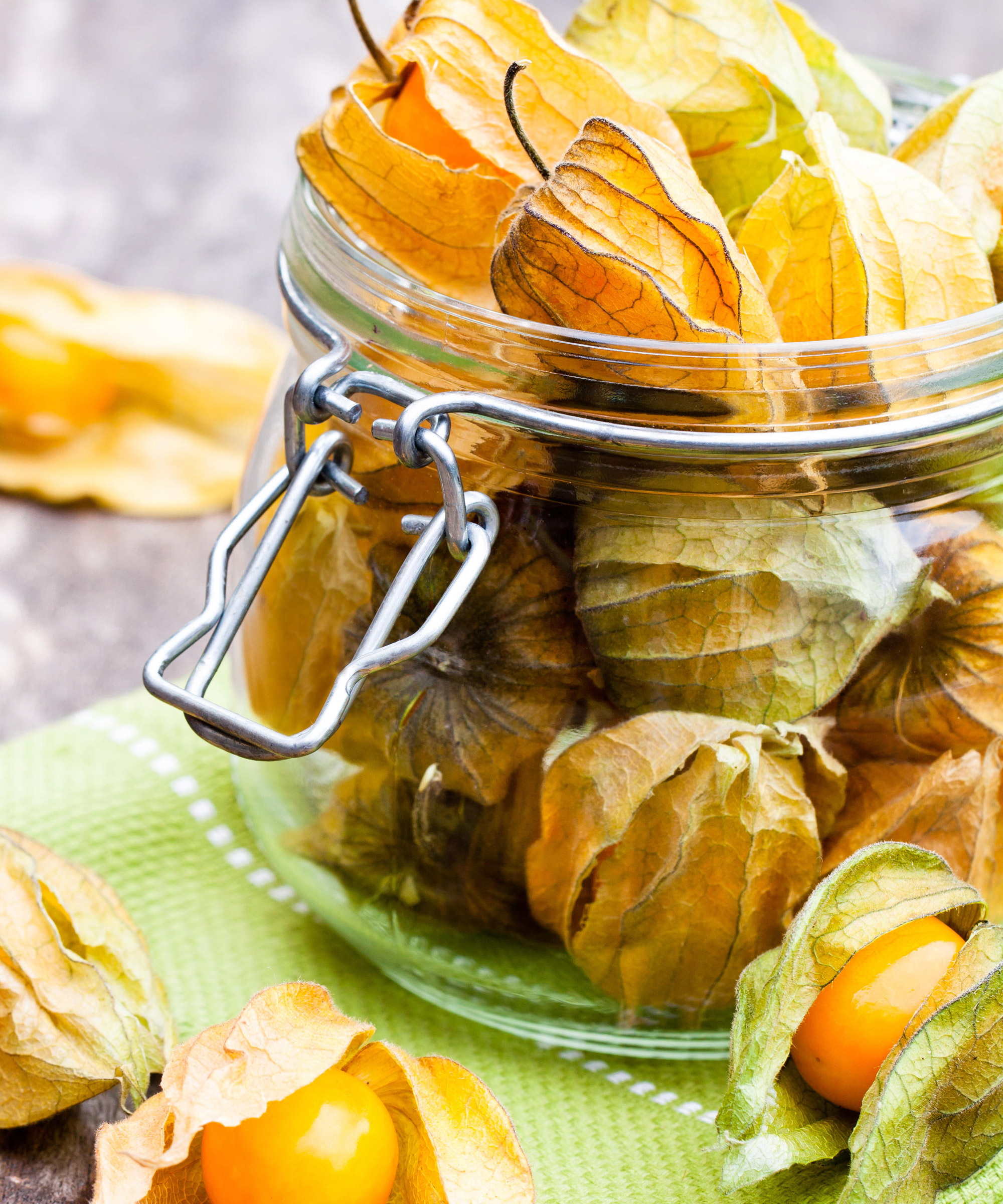
The tangy cousin to the ubiquitous tomato, tomatillo offers a more complex flavor for salsas and sauces
With their fun papery hats, these piquant garden guests are sure to liven up your dinner table. If you fancy something different to round off your vegetables to plant in February, tomatillo (Physalis philadelphica and P. ixocarpa) ticks plenty of boxes. It’s quick-growing, unfussy and strangely familiar – like a tomato, but more tart (evocative of a tiny Granny Smith apple!). And if you know how to grow cilantro and grow tomatoes and chillies from this list, you’re well on your way to making the ultimate salsa verde, plus all sorts of refreshing sauces and chutneys.
Part of the nightshade (Solanaceae) family, there aren’t many rules to follow when tackling this tangy customer. Just remember to grow two tomatillo plants together to assist with pollination. Treat seeds as you would a tomato or pepper, sowing in a propagator, says Lucy Chamberlain. Prick out into individual pots and plant out in a sunny spot once the risk of frost has passed. Green and purple varieties can be trained – try sweet ‘Grande Rio Verde’, classic green ‘Toma Verde’, purple heirloom ‘De Milpa’ and yellow ‘Amarylla’.
Resist the urge to overwater as they hate wet feet! Still, once harvested, these salsa saucepots are perfect enjoyed with a pitcher of margarita for the ultimate Mexican treat.
What else can I do on the vegetable plot in February?
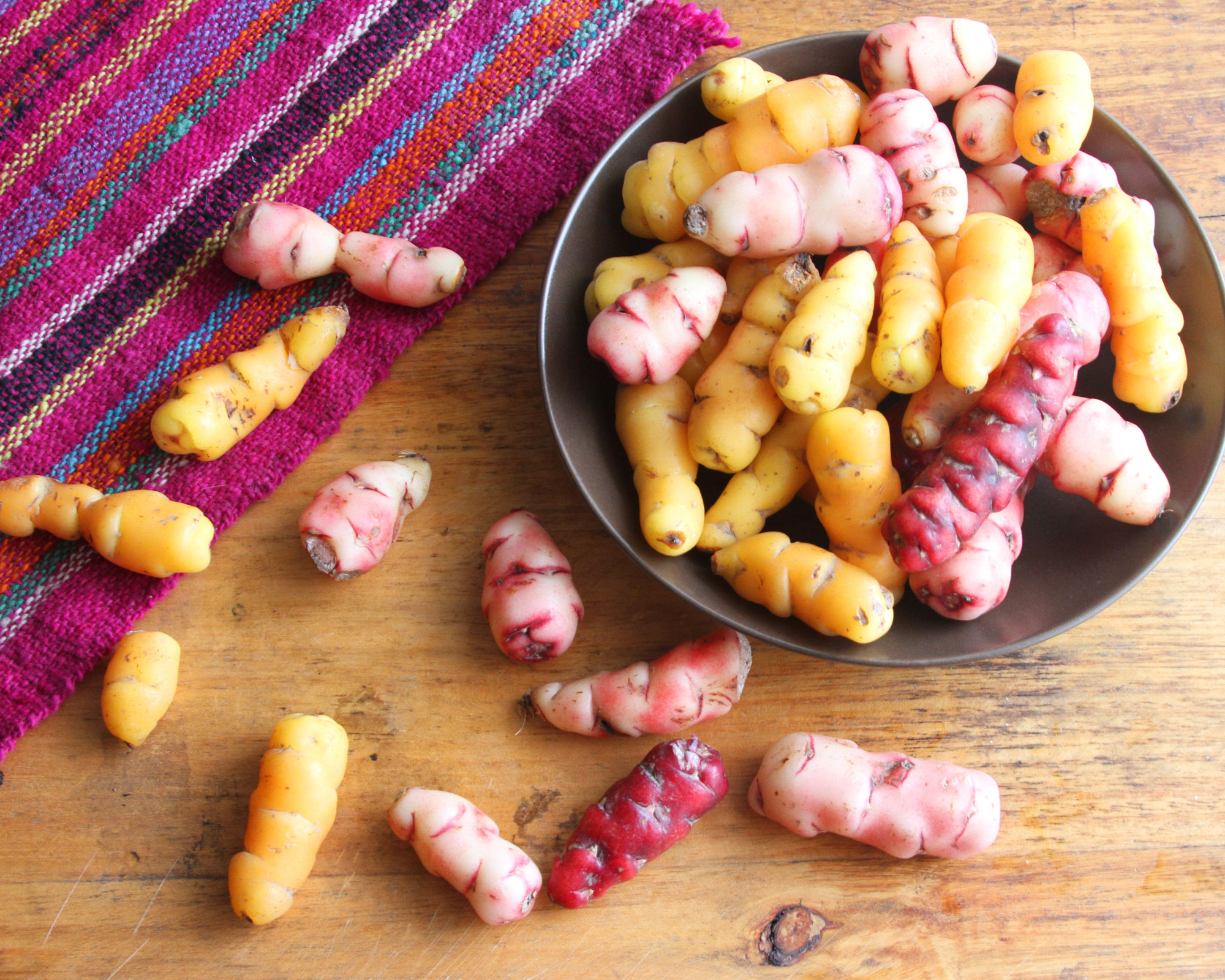
Oca (oxalis tuberosa) is a distinctive South American tuber with a lemony taste
- If you want to know how to grow sweet potatoes and tender tubers like yacon and oca, the key is to give them a long growing season – and start them off under cover now. Pot into large tubs of multipurpose and bury 4in deep. Plant oca and ulluco two or three per three-litre pot. Set large tubers such as yacon and dahlia individually. Sweet potatoes may be sold as cuttings that need rooting in a propagator.
- Planted in a warm, sunny, sheltered spot, figs will provide a delectable harvest. A south-facing wall is ideal. As anyone who has discovered how to grow figs will know, the trick is to make sure the roots are restricted. Lucy Chamberlain recommends a planting hole 15in cubed. Line the sides with paving slabs to restrict root spread. Firm in and water well. Secure bamboo canes to the wall and secure the branches to initiate a fan shape.
- Celery and celeriac are notoriously slow germinators and take time to bulk up, so start yours off now. If you know how to grow parsley, you’ll appreciate that celery and celeriac are best started in seed trays for pricking out later. Sow on the surface of a shallow pot of well-watered seed compost and lightly cover with vermiculite. Set the propagator at 15-18◦C and germination should take place in two-three weeks.
- February is a good time to hand-pollinate flowers of early-maturing peaches and nectarines such as ‘Peregrine’ and ‘Rochester’. This ensures a good fruit set, says Lucy. Manual pollination is key, as bees aren’t often on the wing this early. Work over your planted and container-grown trees every few days, dusting a paintbrush in the centre of each bloom. To find out more about the best fruit trees to grow in pots read our guide. Remember to cover with frost protection on cold nights.
- Keep herbaceous herb plants productive by lifting and dividing tired clumps. The likes of mint, oregano, lemon balm, chives and tarragon form expanding clumps of stems. Lift the plant and cut into 3-4in diameter sections. Discard the middle and retain the younger outer sections. Re-pot into gritty compost or plant into free-draining soil to encourage vigorous new growth. Our guide on how to grow mint outlines other key tips for healthy herbs.
- For anyone who has discovered the joys of how to grow strawberries, now is a chance to force early crops of quick-to-grow varieties like ‘Honeoye’ and ‘Alice’. Move container-grown plants (or pot up those in the ground) into a well-lit, gently heated spot for crops as soon as May. Gradually increase watering and liquid feeds. When blooms appear, brush gently over them to aid pollination and add a high-potash feed.
- If you haven’t already, now is the time to give cobnuts and filberts some TLC. Treated well, these trees produce a tasty harvest and look beautiful – and you can use the stems for plant supports. Young trees don’t need much pruning but after five years, you can intervene to ease congestion and get the best supports. Prune with loppers, a saw and your best secateurs to get the best from these two nut trees. Remove all stems four years or older, as close to the base as possible, for the longest sticks.

As assistant editor of Amateur Gardening magazine, Janey's gardening passion was fostered from an early age, when her amazing mum had her deadheading hydrangeas, mulching roses, and propagating strawberry plants from runners for school open days. She's also taken part in lots of conservation and rewilding projects for the RHS and TCV as a way of exploring her horticultural horizons.
